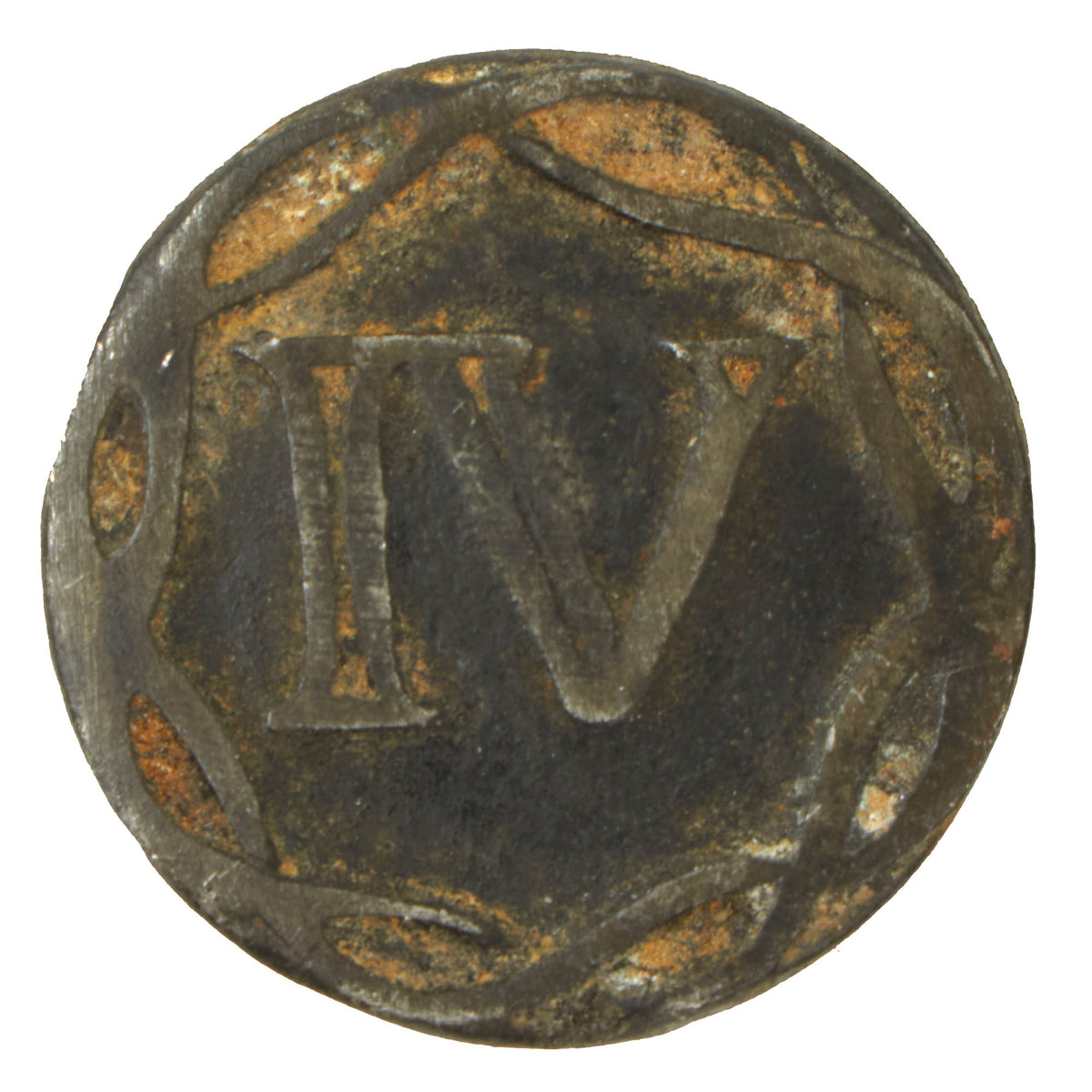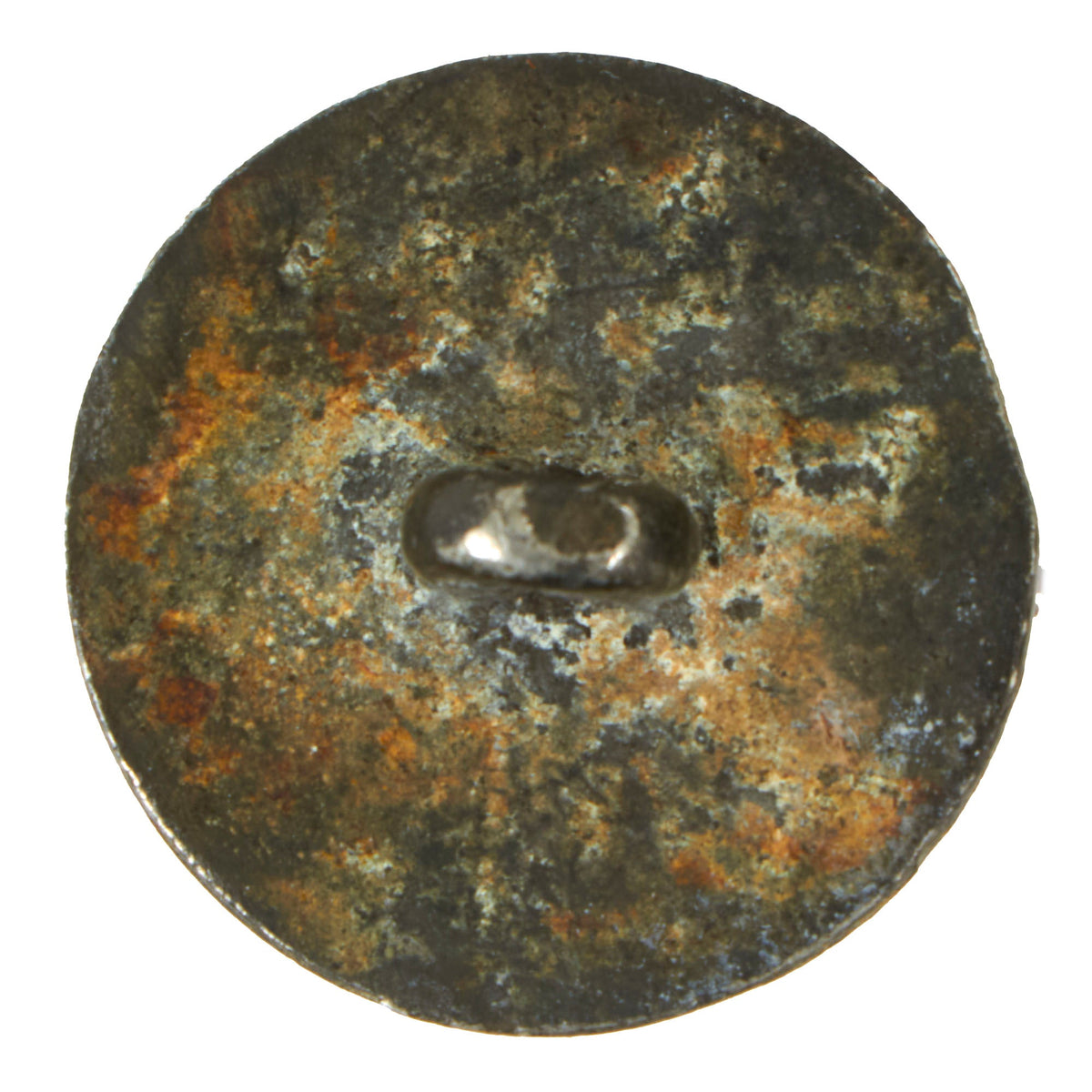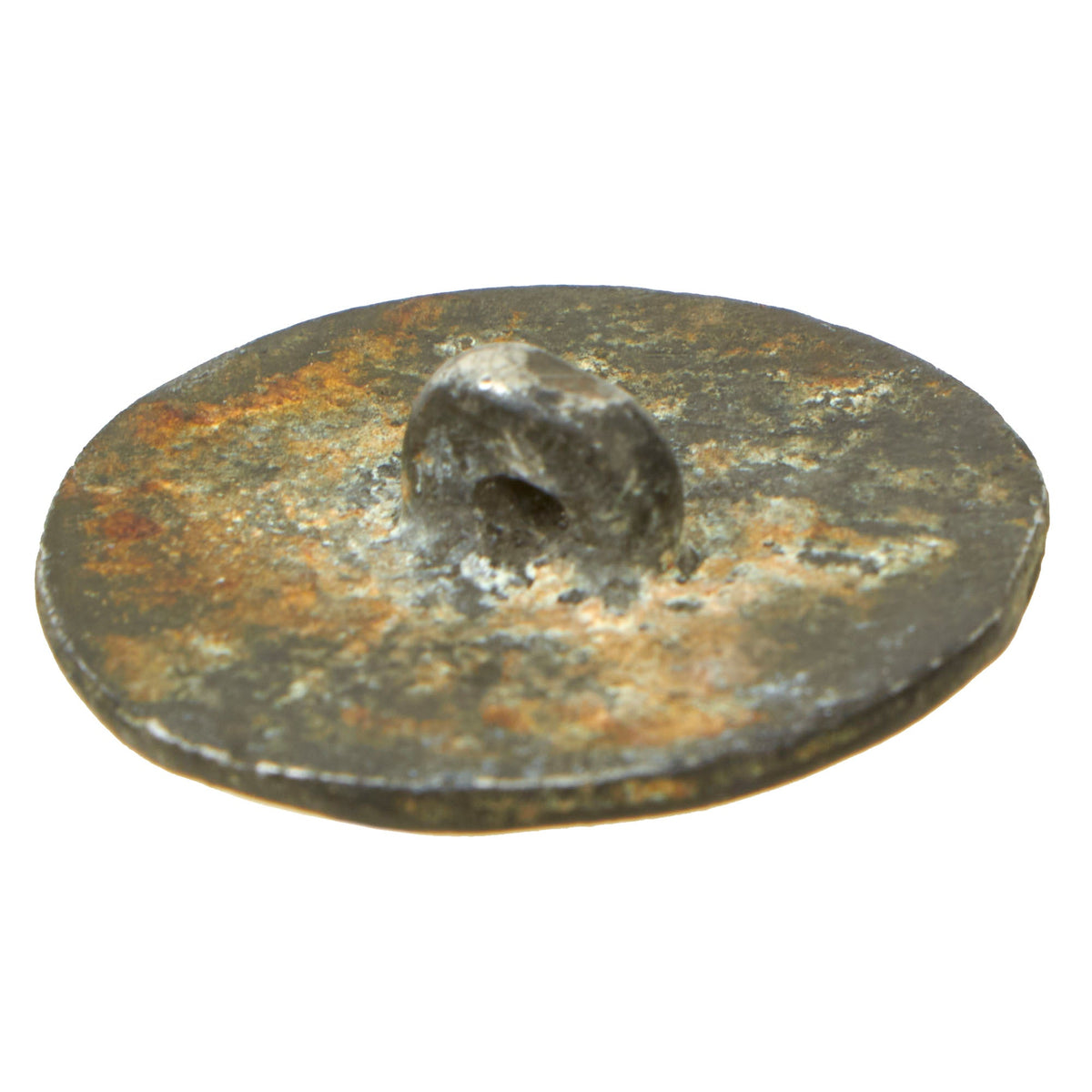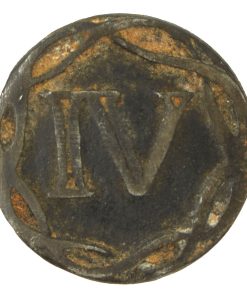Original British American Revolutionary War 4th King’s Own Regiment of Foot Coat Button – Regiment of First British Soldiers Killed Original Items
$ 495,00 $ 148,50
Original Item. Only One Available. This is an exceedingly rare button for the 4th Regiment of Foot or the 4th (King’s Own) Regiment of Foot who fought in the American Revolutionary War. The first British soldiers to die in the American Revolution were arguably three members of the light company of the 4th Foot, who died at Concord Bridge in 1775. The button features vines surrounding IV. 4 in Roman Numerals.
The button measures about 1” in diameter, or 25mm. It appears to have been excavated or ground dug. However, it is in very good condition for its age and still fully retains the loop to sew onto a uniform. Original buttons from the revolutionary war do not come up often, and they are very often faked. Don’t miss out on a phenomenal piece for a member of the regiment who saw the first British soldiers killed in the Revolutionary War!
The King’s Own Royal Regiment (Lancaster) was a line infantry regiment of the British Army. It served under various titles and fought in many wars and conflicts, including both the First and the Second World Wars, from 1680 to 1959. In 1959, the regiment was amalgamated with the Border Regiment to form the King’s Own Royal Border Regiment.
Following the army reforms of 1751, the regiment was retitled 4th (King’s Own) Regiment of Foot. At the start of the Seven Years’ War in 1756, it was part of the Menorca garrison; forced to surrender in June it was transported to Gibraltar. It spent the rest of the war in the West Indies, taking part in the capture of Guadeloupe, Martinique and Saint Lucia before returning home in July 1764. When the American Revolutionary War began in 1775, it was sent to North America; over the next three years, it took part in numerous actions, including Lexington and Concord, Bunker Hill, Long Island and the Battle of White Marsh in December 1777. The first British soldiers to die in the American Revolution were arguably three members of the light company of the 4th Foot, who died at Concord Bridge in 1775. In early 1778, it returned to Saint Lucia where it was part of the garrison during the December 1778 naval battle of St. Lucia, part of the Anglo-French War.
This is a phenomenal piece of U.S. Revolutionary War History. Don’t miss it!
Fast Shipping with Professional Packaging
Thanks to our longstanding association with UPS FedEx DHL, and other major international carriers, we are able to provide a range of shipping options. Our warehouse staff is expertly trained and will wrap your products according to our exact and precise specifications. Prior to shipping, your goods will be thoroughly examined and securely secured. We ship to thousands clients each day across multiple countries. This shows how we're dedicated to be the largest retailer on the internet. Warehouses and distribution centres can be located throughout Europe as well as the USA.
Note: Orders with more than one item will be assigned a processing date depending on the item.
Before shipping before shipping, we'll conduct a thorough inspection of the items you have ordered. Today, the majority of orders will be delivered within 48 hours. The delivery time will be between 3-7 days.
Returns
The stock is dynamic and we cannot completely manage it because multiple stakeholders are involved, including our factory and warehouse. So the actual stock may alter at any time. It's possible that you may not receive your order once the order has been made.
Our policy is valid for a period of 30 days. If you don't receive the product within 30 days, we are not able to issue a refund or an exchange.
You can only return an item if it is unused and in the same state as the day you received it. You must have the item in its original packaging.
Related products
Uncategorized
Uncategorized
Uncategorized
Uncategorized
Uncategorized
Armored Burgonet Helmet & Polearm from Scottish Castle Leith Hall Circa 1700 Original Items
Uncategorized
Uncategorized
Uncategorized
Uncategorized
Uncategorized
Uncategorized
Uncategorized
Australian WWII Owen MK1 Machine Carbine SMG Custom Fabricated Replica with Sling Original Items
Uncategorized
Uncategorized
Uncategorized







































































